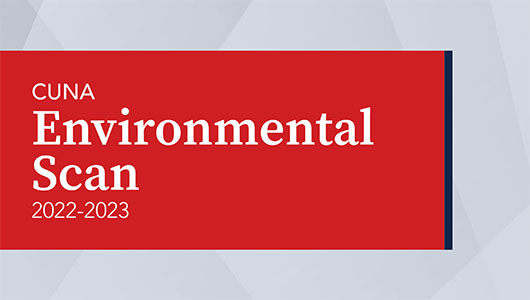
Strategic planning: Stay focused and relevant
Rolling plans, vision casting provide flexibility and insights into goals.
Listen to the article
The past 2.5 years have been filled with challenges for financial institutions: the pandemic, supply chain shortages, inflation, and global conflict to name a few.
These uncertainties have affected how credit unions approach strategic planning and the need to be agile during times of change.
“Strategic planning should take a long view and acknowledge that we don’t know what’s coming next,” says Theresa Trimble, CEO at $117 million asset FRB Federal Credit Union in Washington, D.C. “Strategic plans also need to be flexible so organizations react in the short term without losing sight of the long-range vision.”
Credit unions don’t want to be surprised by the next crisis. They want to be responsive and technologically capable.
Strategic planning still needs a longer-term view, but “within that plan they need to be flexible and ready to adjust actions and interim goals as needed,” says Trimble, adding that focusing on purpose is paramount for short- and long-term planning.
“Many credit union leaders are taking a hybrid approach and are only looking forward one to three years, with a more tactical focus so they’re not caught off guard,” says Scott Butterfield, principal of Your Credit Union Partner.
Jeff Rendel, president of Rising Above Enterprises, agrees with this assessment. “While a long-term vision might stretch to five years, many credit unions are working with a rolling three-year plan that is revised each year based on accomplishments and new aspects of the marketplace,” he says.
Credit unions are also conducting more separate “vision casting” sessions, a process of mapping out your vision to achieve your goals.
“This is usually a day-long session tied to a strategic planning event,” says Rendel. “Credit unions that engage in vision casting do so every few years, with each tactical planning session still reflecting the longer-term vision.”
Pandemic’s impact continues
The impact of COVID-19 and its surrounding social and economic turmoil will influence credit union strategic planning for the next several years, industry experts say.
Credit unions continue to confront external economic and environmental challenges presented by the global pandemic and its aftermath. With credit unions of all sizes struggling with internal morale and burnout challenges, “credit union leaders must consider multiple workforce scenarios,” Butterfield says.
“In my 37-year credit union career, I have never seen more vulnerable credit union teams,” he says. “This fact, along with the difficulty in recruiting and retaining staff, is why credit union leaders should work with human resource leaders to build robust employee development plans.”

‘Strategic planning should take a long view and acknowledge that we don’t know what’s coming next.’
Theresa Trimble
Other issues to consider during strategic planning:
- High deposit growth due to stimulus funding, which stressed credit union balance sheets and capital levels.
- An increased focus on remote and digital technologies. Many organizations were ill-equipped to handle the need for increased remote access for staff and members during the pandemic.
Credit unions are addressing these issues now, says Butterfield. “The top priority among many smaller credit unions is correcting the remote online account opening and loan processing gaps. Many are making this investment despite fear of earnings pressure.
“We’re also seeing many credit unions considering core changes,” he continues, “as they are unhappy with the capacity and service of their current core.”
Dealing with technology is a good example of how short- and long-term planning should align, Trimble says.
“For example, the long-term planning goal may be to become more digital and more seamless with better data analytics,” she says. “Therefore, shorter-term planning should include what must be done to move toward those goals.
“Contract expirations, end-of-life issues for software and hardware, the landscape for the technology under review, lead time for major projects, staff skills, and workloads are examples of factors that short-term planning must address,” Trimble continues.
- Board diversity. Some boards fail to understand changes in consumer demographics and how different consumers have dissimilar values, wants, needs, and expectations.
“This lack of understanding limits strategic thinking and long-term planning,” says Butterfield.
Moving forward
Effective strategic planning encompasses long-term goals, short-term discussions about projects and timelines, and the annual budget process.
Executives need to act quickly and be able to work through the execution process along tighter timelines.
“This requires good decision-making, excellent project management skills, and key performance indicators that provide real-time feedback on results,” says Rendel.
Directors, he continues, must be comfortable leading in a volatile industry.
“The degree of current and future disruption in financial services is increasing and will continue grow,” says Rendel. “Although challenging, it is also an opportunity to serve members who want a financial institution that evolves with the expected retail experience.”
Staying focused is the key to success. Some strategic plans get mired in details or try to accomplish too much, Trimble says.
“Keep it focused and relevant,” she says. “And remember good communication is vital. Make sure operational teams and senior leadership stay connected.”
